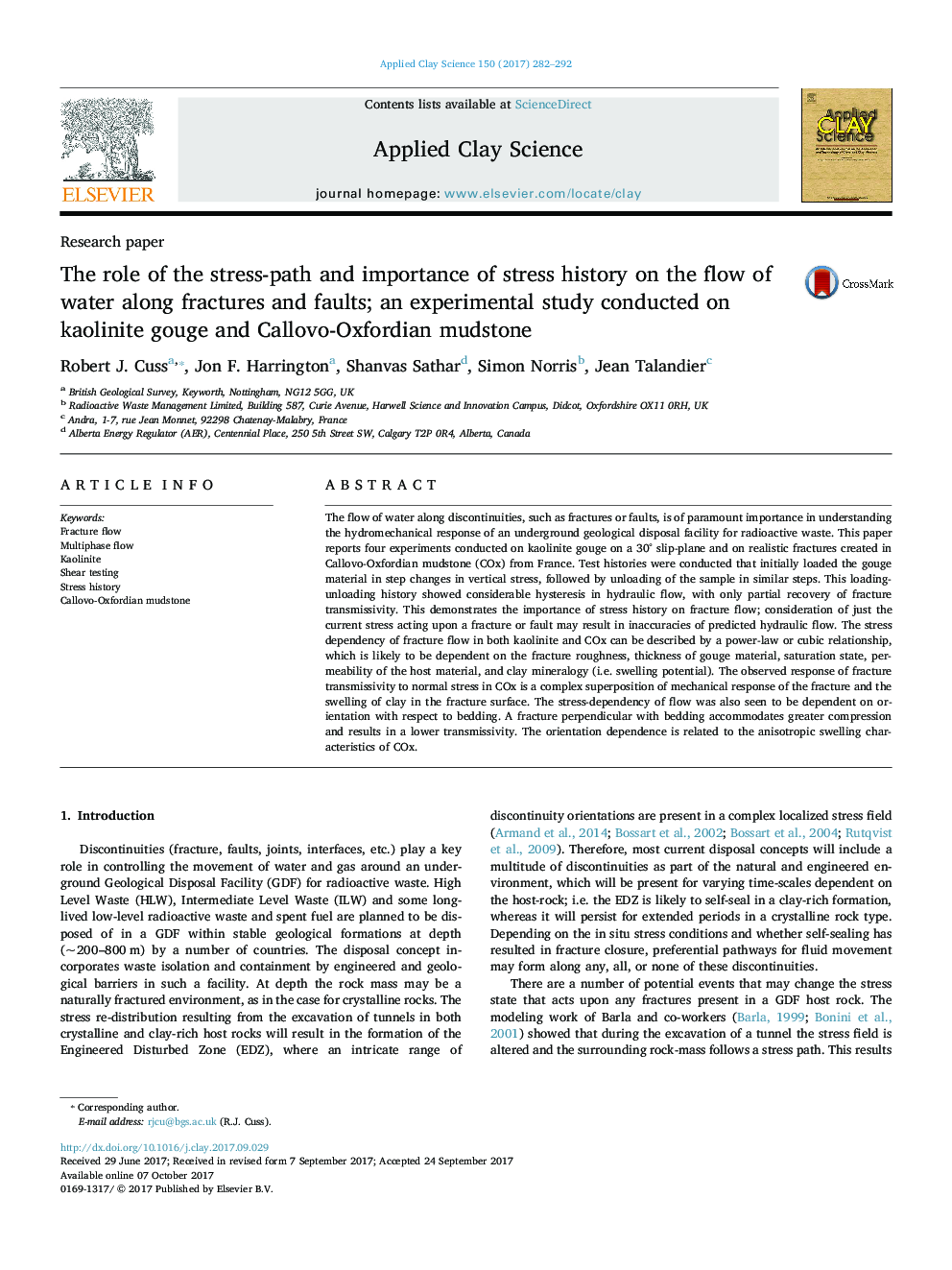| Article ID | Journal | Published Year | Pages | File Type |
|---|---|---|---|---|
| 5468509 | Applied Clay Science | 2017 | 11 Pages |
Abstract
The flow of water along discontinuities, such as fractures or faults, is of paramount importance in understanding the hydromechanical response of an underground geological disposal facility for radioactive waste. This paper reports four experiments conducted on kaolinite gouge on a 30° slip-plane and on realistic fractures created in Callovo-Oxfordian mudstone (COx) from France. Test histories were conducted that initially loaded the gouge material in step changes in vertical stress, followed by unloading of the sample in similar steps. This loading-unloading history showed considerable hysteresis in hydraulic flow, with only partial recovery of fracture transmissivity. This demonstrates the importance of stress history on fracture flow; consideration of just the current stress acting upon a fracture or fault may result in inaccuracies of predicted hydraulic flow. The stress dependency of fracture flow in both kaolinite and COx can be described by a power-law or cubic relationship, which is likely to be dependent on the fracture roughness, thickness of gouge material, saturation state, permeability of the host material, and clay mineralogy (i.e. swelling potential). The observed response of fracture transmissivity to normal stress in COx is a complex superposition of mechanical response of the fracture and the swelling of clay in the fracture surface. The stress-dependency of flow was also seen to be dependent on orientation with respect to bedding. A fracture perpendicular with bedding accommodates greater compression and results in a lower transmissivity. The orientation dependence is related to the anisotropic swelling characteristics of COx.
Related Topics
Physical Sciences and Engineering
Earth and Planetary Sciences
Geochemistry and Petrology
Authors
Robert J. Cuss, Jon F. Harrington, Shanvas Sathar, Simon Norris, Jean Talandier,
